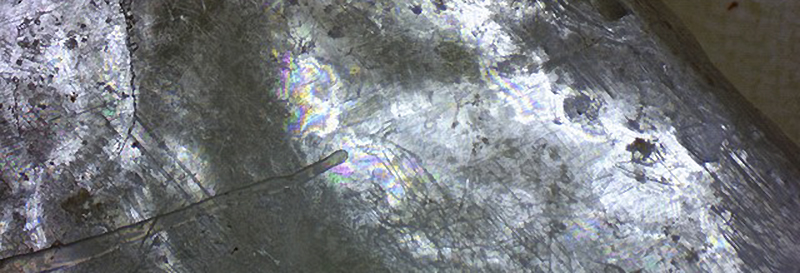Selenite
Selenite is one of the three forms of pure natural crystalline gypsum, with one other, satin spar having a very similar features, the other natural form is gypsum rock which is commonly crushed and used in the manufacture of plaster products.
In old English gypsum was referred to as spear stone (spærstn) because of its crystal spear-like projections, of which selenite and satin spar have the most notable. Selenite crystals are much rarer than satin spar crystals, whilst gypsum rock is relatively common. Other forms of crystalline gypsum are known as tabular gypsum, which is normally shorter blocks of satin spar, whilst desert roses, form with grains of sand and gypsum flower which are referred to as crystal habits.
Selenite crystals form in large flat, transparent crystals, often called plates or windows, whilst Satin Spar crystals are fibrous and white, often appear as raw rulers or wands which can be polished into palmstones or spheres. The naturally large flat transparent form of selenite crystals, might also be called Lapis Specularis a form of selenite that was put to good use by the Romans in the construction of specularia (sometimes referred to as specularium), which included the first types of windows before the development of glass for use in glazing, it was used to construct Roman winter gardens for horticulture.
[edit] Related articles on Designing Buildings
- Botanical gardens
- Construction materials.
- Conservatory.
- Drywall construction.
- Garden greenhouse.
- Gypsum.
- Hydroponics and buildings.
- Lime plaster.
- Minerals of local and national importance.
- Mortar.
- Permission for mining or working of minerals.
- Plaster.
- Specularium.
- The secret life of the Georgian garden.
- Types of glass.
- Winter gardens.
Featured articles and news
RTPI leader to become new CIOB Chief Executive Officer
Dr Victoria Hills MRTPI, FICE to take over after Caroline Gumble’s departure.
Social and affordable housing, a long term plan for delivery
The “Delivering a Decade of Renewal for Social and Affordable Housing” strategy sets out future path.
A change to adoptive architecture
Effects of global weather warming on architectural detailing, material choice and human interaction.
The proposed publicly owned and backed subsidiary of Homes England, to facilitate new homes.
How big is the problem and what can we do to mitigate the effects?
Overheating guidance and tools for building designers
A number of cool guides to help with the heat.
The UK's Modern Industrial Strategy: A 10 year plan
Previous consultation criticism, current key elements and general support with some persisting reservations.
Building Safety Regulator reforms
New roles, new staff and a new fast track service pave the way for a single construction regulator.
Architectural Technologist CPDs and Communications
CIAT CPD… and how you can do it!
Cooling centres and cool spaces
Managing extreme heat in cities by directing the public to places for heat stress relief and water sources.
Winter gardens: A brief history and warm variations
Extending the season with glass in different forms and terms.
Restoring Great Yarmouth's Winter Gardens
Transforming one of the least sustainable constructions imaginable.
Construction Skills Mission Board launch sector drive
Newly formed government and industry collaboration set strategy for recruiting an additional 100,000 construction workers a year.
New Architects Code comes into effect in September 2025
ARB Architects Code of Conduct and Practice available with ongoing consultation regarding guidance.
Welsh Skills Body (Medr) launches ambitious plan
The new skills body brings together funding and regulation of tertiary education and research for the devolved nation.
Paul Gandy FCIOB announced as next CIOB President
Former Tilbury Douglas CEO takes helm.
UK Infrastructure: A 10 Year Strategy. In brief with reactions
With the National Infrastructure and Service Transformation Authority (NISTA).























